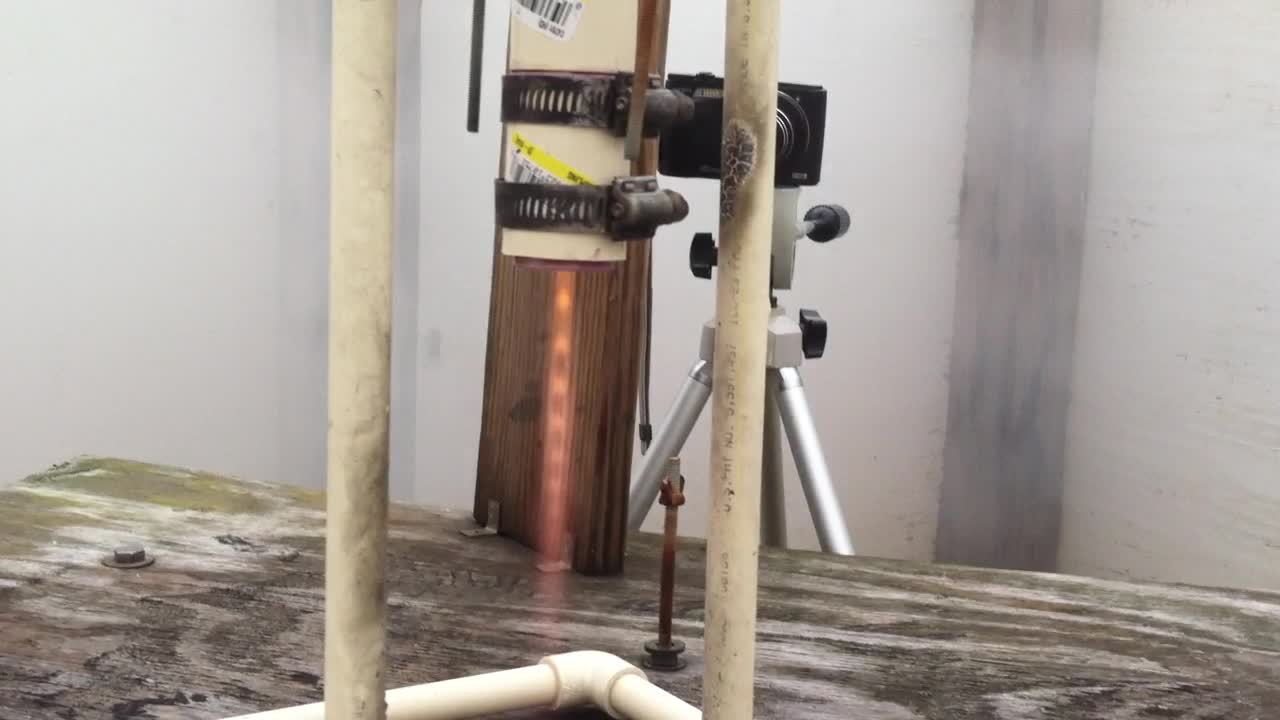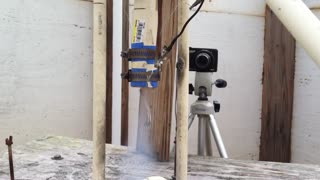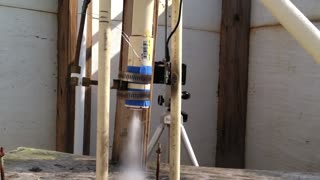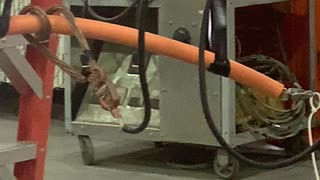Premium Only Content

PLA/KMnO4 High Flux Test
There were two test in October. I eliminated the glow wire for ignition and decreased the cross sectional area of the 15 cm PLA/KMnO4 fuel cell to increase the oxidizer flux. All other parameters were the same. I used a blend of 55 ml of ~ 85% HTP and 1.7 ml of denatured ethanol (O/F = 37.4) as the oxidizer. I used a 1/4" stainless steel mist nozzle with a 1.0 mm orifice as the injector and a graphite phenolic nozzle with an initial throat diameter of 5 mm. The objective was to determine what effect the increased flux had on the operation of the engine and if auto ignition would occur without the glow wire.
The ignition oxidizer flux was ~14 gm/cm2-sec and was the same for both test. Ignition occurred in ~1.9 sec for the low flux fuel core and ~1.5 sec for the high flux fuel core. The ignition times are about the same as with a glow wire igniter. Eliminating the igniter simplifies the system.
The run-time oxidizer flux was ~5.4 gm/cm2-sec for the low flux fuel core and 9.1 gm/cm2-sec for the high flux fuel core. The fuel core regression rate and O/F ration was approximately the same in both test. The deciding factor was the chamber pressure and the characteristic velocity. The propellant tank was pressurized to 130 psig using CO2 gas as the pressurant in both test. The low flux test had a higher chamber pressure with corresponding higher characteristic velocity with a c* efficiency of ~91%. Based on these results and despite the longer ignition time, I've selected the low flux 15 cm fuel core for the class I flight system.
-
 0:20
0:20
FisherSpaceSystems
3 years agoHTPE/PLA KMnO4 Class I Engine
107 -
 0:12
0:12
FisherSpaceSystems
3 years ago $0.01 earned08-24-2021 HTPE/PLA/KMnO4 Chamber Pressure
138 -
 2:42
2:42
WXYZ
3 years agoAt home COVID test kits in high demand
1244 -
 0:05
0:05
RenegadeMermaid2
4 years ago $0.23 earnedTest test test test test test
1.03K1 -
 0:50
0:50
KTNV
3 years agoTwo individuals at Foothill High School test positive for COVID-19
616 -
 0:47
0:47
1672Billy
4 years ago $0.02 earnedHigh voltage high pot test
115 -
 0:07
0:07
Onus3
3 years agoTest test
1044 -
 1:02:25
1:02:25
Steven Crowder
4 hours ago🔴 Qatar: The Small Gulf State with Portentous Global Influence
241K154 -
 2:34:36
2:34:36
Tate Speech by Andrew Tate
9 hours agoEMERGENCY MEETING EPISODE 109 - KNIFE CRIME ON MARS
92.9K57 -
 1:06:19
1:06:19
The Rubin Report
3 hours agoTrump, Bukele & Bondi Relentlessly Drill Reporter w/ Facts About Deported Gang Member
46.3K34